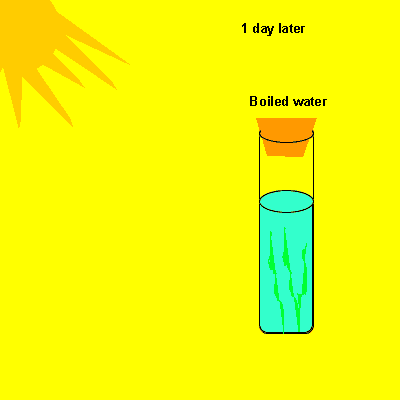A student was asked to investigate if water that had previously been boiled can sustain life. She set up the experiment shown on the right. She placed boiled water and water plants in a sealed test tube and placed it in the sunshine. She observed that the plants died quickly.
Her conclusion was that
"Boiled water must be missing some components necessary to sustain life."

At
first glance her conclusion is justified.
Are there any questions we need to ask or is it clear that it was definitely
the boiled water that caused the plants to die?
Was it the heat created by the solar radiation that killed the plants?
Were the plants healthy or would they have died anyway?
Was the water contaminated?
We need to set up a fair and proper scientific investigation called an experiment.
The set up on the right contains two identical test tubes with identical plants and the same volume of water placed in the same sunny location. The test tubes differ in only one aspect. One has water that was previously boiled while the other has normal tap water. Things that an experimenter can change are called variables. The test tube on the left is said to be a control. All other outcomes are compared to the control to ensure a fair test. From our observations we can conclude that it can not be the heat of the sun or the poor health of the plants that killed them.
Although further investigation is needed, we can say that it may be the boiled water that contributed to the plant's death.
